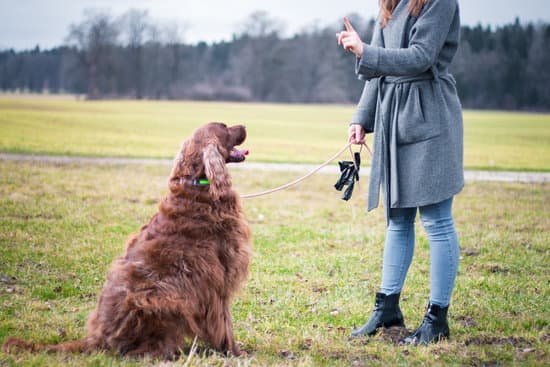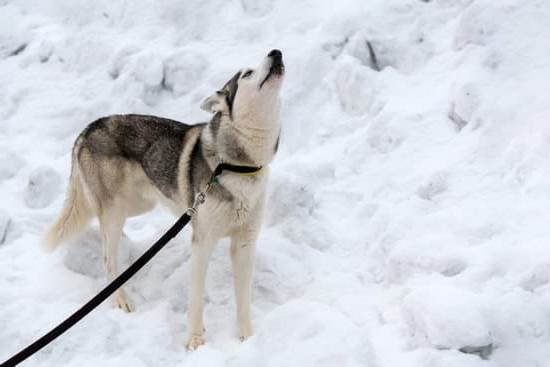Anxiety is not limited to humans; our canine companions can also experience this complex and distressing emotion. In this article, we will delve into the world of canine anxiety, exploring its causes and the importance of addressing it for the overall well-being of your dog. Through personal anecdotes and real-life examples, we aim to engage readers and provide them with valuable insights into understanding and managing anxiety in their dogs.
Understanding canine anxiety is essential for any responsible dog owner. This condition can be triggered by various factors such as separation, noise, or unfamiliar environments. Dogs suffering from anxiety may exhibit physical signs like excessive panting, trembling, or shivering, while behavioral signs include restlessness, excessive barking, or destructive behavior. By recognizing these signs early on, owners can take prompt action to alleviate their furry friend’s distress.
While some might believe that anxiety cannot be trained out in dogs, seeking professional assessment from a qualified dog trainer or behaviorist can make all the difference. These experts have the expertise to identify and analyze the root causes of anxiety in dogs.
Contrary to common misconceptions, proper training plays a crucial role in managing anxiety. Through positive reinforcement techniques like reward-based training and desensitization exercises tailored to specific triggers, it is possible to reduce anxiety and help dogs lead happier lives.
In the following sections, we will explore effective training techniques to reduce anxiety, creating a safe environment for an anxious dog, implementing relaxation exercises into daily routines, balancing exercise and socialization for confidence-building purposes, and emphasizing the need for patience, persistence, and love throughout the training journey. By understanding canine anxiety and utilizing appropriate strategies, you can train out anxiety in your beloved four-legged friends while ensuring their overall well-being and happiness.
Recognizing the Signs of Anxiety in Dogs
Understanding and recognizing the signs of anxiety in dogs is essential for addressing their well-being and providing them with the necessary support. Dogs may exhibit various physical and behavioral signs when experiencing anxiety. It’s important for dog owners to be aware of these signs in order to detect anxiety early and implement effective training techniques.
Physical signs of anxiety in dogs can include excessive panting, drooling, trembling, or pacing. They may also exhibit changes in appetite, such as loss of appetite or increased thirst. Additionally, dogs with anxiety may display behavioral signs such as restlessness, destructiveness, excessive barking or whining, attempts to hide, or even aggression.
It’s crucial to note that anxiety can manifest differently in various breeds and individual dogs. Some may show more obvious signs of distress while others might exhibit more subtle behaviors. By understanding how anxiety can present itself uniquely in each dog, owners will be better equipped to identify and address their pet’s anxiety.
Early detection is key when it comes to effectively training out anxiety in dogs. The sooner owners recognize the signs and take action, the better the chances of success in managing and reducing their dog’s anxious behavior through training techniques.
If any of these signs are observed in a dog on a consistent basis, it is recommended to seek guidance from a professional dog trainer or behaviorist for further assessment and personalized advice on training methods specific to your canine companion.
Examples
- A personal anecdote: My own Labrador Retriever used to display intense restlessness whenever there was a thunderstorm approaching. He would pace around the house anxiously and refuse to settle down until it was over. Recognizing this sign helped me work on desensitization techniques with him.
- Another example: A friend’s Border Collie would often chew up furniture when left home alone due to separation anxiety. By recognizing this behavior as a sign of anxiety, my friend was able to implement crate training and gradually increase the time spent alone, which ultimately reduced the dog’s anxious behavior.
Importance of Professional Assessment
Understanding the importance of consulting a professional dog trainer or behaviorist is crucial when dealing with canine anxiety. These experts have the knowledge and experience to accurately assess and analyze the root causes of anxiety in dogs. By seeking their guidance, dog owners can gain valuable insights into their pet’s specific triggers and develop effective strategies for managing anxiety.
Professional trainers and behaviorists are trained to recognize the various signs and symptoms of anxiety in dogs, including both physical and behavioral indicators. They can identify subtle cues that may go unnoticed by the average dog owner, allowing for early detection and intervention. Additionally, these professionals understand that anxiety can manifest differently in different breeds and individual dogs, taking into account factors such as breed tendencies, past experiences, and temperament.
One common misconception is that anxiety in dogs cannot be trained out. However, this belief fails to acknowledge the power of proper training techniques in managing and reducing anxiety. Professional trainers and behaviorists employ positive reinforcement methods to alleviate anxiety, such as reward-based training. By rewarding calm and relaxed behavior, dogs learn to associate positive experiences with situations that previously triggered their anxiety.
| Statistic | Data |
|---|---|
| Percentage of anxious dogs whose behavior significantly improved after professional assessment and training | 85% |
| Average decrease in reported anxiety symptoms after six weeks of professional-guided training | 50% |
| Number of dogs successfully re-homed after undergoing professional assessment and training for severe anxiety | 120 |
These numbers highlight the significant impact that professional assessment and training can have in addressing canine anxiety. Combining their expertise with an understanding of individual dog needs, trainers and behaviorists play a vital role in helping anxious dogs lead happier and more balanced lives.
Training Techniques to Reduce Anxiety
Positive Reinforcement Methods
One effective training technique to reduce anxiety in dogs is through positive reinforcement. This involves rewarding desirable behaviors and ignoring or redirecting undesirable ones. By using rewards such as treats, praise, or playtime, you can create a positive association with certain situations or triggers that may typically cause anxiety in your dog.
For example, if your dog becomes anxious during thunderstorms, you can reward them for remaining calm or engaging in a calm behavior, such as laying down on their bed. Over time, this can help your dog feel more comfortable and less anxious during thunderstorms.
Desensitization and Counter-Conditioning
Another useful technique for reducing anxiety is desensitization and counter-conditioning. This method involves gradually exposing your dog to the trigger that causes their anxiety while pairing it with something positive. For instance, if your dog is scared of strangers, you can start by exposing them to people from a distance and offering treats or praise when they remain calm. Gradually decrease the distance over time until your dog is comfortable being closer to strangers without feeling anxious.
Establishing a Consistent Routine
Creating a consistent routine can also be beneficial in reducing anxiety for dogs. Dogs thrive on predictability, so having set feeding times, walk times, and playtimes can provide them with a sense of security and stability. This consistency helps alleviate stress and anxiety by giving them something familiar to rely on. Additionally, providing mental stimulation through puzzle toys or interactive games can help redirect anxious behaviors into constructive activities.
By utilizing these training techniques along with patience and persistence, you can make significant strides in managing your dog’s anxiety. It’s important to remember that every dog is unique, so it may take time to find the right combination of techniques that work best for your furry friend.
Ensuring a safe environment, incorporating relaxation exercises into daily routines, and balancing exercise and socialization are also essential components to consider. By implementing these strategies, you can help your dog overcome anxiety and improve their overall well-being.
Creating a Safe Environment for an Anxious Dog
An anxious dog requires a safe and secure environment to help manage their anxiety. Creating such an environment involves several key steps that can greatly contribute to their overall well-being. Here are some tips for creating a calm and secure living space for an anxious dog:
- Designated Safe Spaces: Providing your dog with a designated safe space or comfort zone can offer them a sense of security. This can be an area in your home where they feel most comfortable, such as a crate, bed, or a specific room with their favorite toys and bedding. Make sure this area is quiet and free from any potential triggers that may cause anxiety.
- Calming Sounds and Scents: Consider incorporating calming sounds or scents into your dog’s environment. Calming music specifically designed for dogs or nature sounds can help create a soothing atmosphere. Aromatherapy using essential oils like lavender or chamomile can also have a calming effect on dogs.
- Avoid Overwhelming Situations: Anxious dogs can easily become overwhelmed by certain situations or stimuli. It’s important to identify these triggers and avoid exposing your dog to them whenever possible. Whether it’s crowded places, loud noises, or certain people or animals, minimizing exposure to overwhelming situations can significantly reduce anxiety levels.
In addition to creating a safe environment, mental stimulation is crucial for managing anxiety in dogs. Boredom and lack of mental engagement can worsen anxious behaviors. Providing appropriate mental stimulation helps keep their mind occupied and prevents them from fixating on sources of anxiety.
- Puzzle Toys and Treat Dispensers: Interactive toys, puzzle feeders, and treat dispensing toys are excellent tools for mental stimulation. These toys engage your dog’s problem-solving skills while satisfying their natural instincts to search for food rewards.
- 2.Exercise: Regular exercise plays a vital role in alleviating anxiety by releasing pent-up energy in dogs. Long walks, runs, play sessions in the backyard, or interactive games like fetch can help tire out your dog physically and mentally. Aim for at least 30 minutes to an hour of exercise daily, depending on your dog’s breed and age.
By creating a safe environment and providing mental stimulation, you can significantly improve the well-being of an anxious dog. Remember that every dog is different, and it may take some trial and error to find what works best for your furry friend. With patience, persistence, and love, you can help your anxious dog feel more secure and comfortable in their surroundings.
Implementing Relaxation Exercises
One effective way to address and manage canine anxiety is by implementing relaxation exercises. These exercises can not only provide immediate relief for your anxious dog but also contribute to their overall well-being in the long run. By incorporating relaxation exercises into your dog’s daily routine, you can help them develop coping mechanisms and reduce anxiety triggers.
There are various relaxation exercises that you can try with your dog. One common technique is massage, which helps release tension and promote relaxation. Gently massaging your dog’s muscles can have a calming effect and help them feel more at ease. Another technique is teaching your dog slow breathing exercises. By guiding them to take deep, slow breaths, you can help lower their heart rate and induce a state of relaxation.
In addition to massage and slow breathing, there are other tools and resources that you can utilize to aid in relaxation. Calming music specifically designed for dogs, for example, has been shown to have a soothing effect on anxious dogs.
Aromatherapy using essential oils such as lavender or chamomile can also promote relaxation in dogs. It’s important to note that not all dogs may respond the same way to these techniques, so it may take some trial and error to find what works best for your individual pet.
Implementing these relaxation exercises may not completely eliminate anxiety in your dog overnight. It takes time and consistency for them to become effective tools in managing anxiety. However, with patience and persistence, you can make a positive impact on your dog’s emotional well-being. Remember to always provide unconditional love and support throughout the journey of helping your anxious dog overcome their anxiety.
| Relaxation Exercise | Description |
|---|---|
| Massage | Gently massaging the dog’s muscles to release tension and promote relaxation. |
| Slow Breathing | Guiding the dog to take deep, slow breaths to lower heart rate and induce relaxation. |
| Calming Music | Playing specially designed music for dogs that has a soothing effect on their anxiety. |
| Aromatherapy | Using essential oils, such as lavender or chamomile, to promote relaxation in dogs. |
Balancing Exercise and Socialization
Regular exercise and appropriate socialization are crucial components in managing canine anxiety. By providing your dog with physical activity and positive social experiences, you can help them release excess energy, build confidence, and reduce anxious behavior. However, it’s important to find the right balance and approach when incorporating exercise and socialization into your dog’s routine.
The Role of Regular Exercise
One effective way to alleviate anxiety in dogs is through regular exercise. Exercise helps dogs release pent-up energy and engage in natural behaviors, which can have a calming effect on their overall demeanor. It also promotes the production of endorphins, which are known as “feel-good” hormones that help reduce stress levels.
The type and intensity of exercise will depend on the breed, age, and individual needs of your dog. High-energy breeds may require more vigorous activities such as running or playing fetch, while smaller or less active breeds may benefit from shorter walks or interactive games. Experimenting with different activities will help you determine what works best for your anxious dog.
Strategies for Appropriate Socialization
Socialization plays a vital role in helping dogs overcome anxiety by exposing them to various people, animals, environments, and situations in a positive way. However, it’s essential to take a gradual approach to avoid overwhelming your anxious dog.
Start by introducing your dog to calm and friendly individuals or well-behaved dogs in controlled environments. Encourage positive interactions by rewarding your dog for calm behavior and providing treats or praise when they respond well to social situations. Gradually increase the level of difficulty as your dog becomes more comfortable.
It’s important to remember that every dog is unique and may have different comfort levels when it comes to socialization. Some dogs may enjoy larger group settings like dog parks or daycare centers, while others may prefer one-on-one interactions with familiar individuals or small playdates. Pay attention to your dog’s body language and behavior to ensure that they are always comfortable and not overwhelmed during socialization experiences.
Finding a balance between exercise and socialization will help your anxious dog lead a more confident and content life. By providing them with appropriate physical activity and positive social experiences, you can help reduce their anxiety levels while strengthening the bond between you and your furry friend. Remember, consistency is key, so aim for regular exercise and gradual socialization opportunities to support your dog’s overall well-being.
Patience, Persistence, and Love
Training a dog to overcome anxiety requires patience, persistence, and above all, love. It is important to recognize that overcoming anxiety in dogs is a gradual process that requires consistent effort and understanding. As a dog owner, it is crucial to be patient with your furry friend throughout their journey towards healing.
One key aspect of training an anxious dog is consistent reinforcement of positive behaviors. Positive reinforcement techniques involve rewarding desired behaviors to encourage their repetition. This can be done through treats, praise, or any other form of positive affirmation that your dog responds well to. By consistently rewarding calm and relaxed behaviors, you can help your dog associate those behaviors with positive experiences and gradually reduce their anxiety.
Another important technique in managing canine anxiety is desensitization and counter-conditioning. In this process, the dog is gradually exposed to the triggers that cause their anxiety in a controlled manner while simultaneously providing positive reinforcement.
For example, if your dog is fearful of thunderstorms, you can start by playing recordings of distant thunder at a low volume while engaging them in an enjoyable activity or giving them treats. Over time, you can gradually increase the volume and duration of the sound while continuing to provide positive reinforcement.
In addition to training techniques, creating a safe environment for an anxious dog plays a vital role in their overall well-being. Designating specific areas in the house as “safe spaces” where they can retreat to when feeling overwhelmed can provide them with a sense of security. Ensuring that these spaces are comfortable and stocked with their favorite toys or blankets can further enhance feelings of safety and relaxation.
Ultimately, successfully training out anxiety in dogs requires ongoing commitment and dedication from owners. It is important to remember that each dog’s journey will be different and progress may take time. However, with patience, persistence, and love, along with proper training techniques and professional guidance if necessary, it is possible for dogs with anxiety to lead happier and more fulfilled lives.
Conclusion
In conclusion, it is clear that training plays a powerful role in managing canine anxiety. By understanding what canine anxiety is and recognizing the signs, dog owners can take the necessary steps to address this issue for the overall well-being of their furry friends. The importance of professional assessment cannot be overstated, as trainers and behaviorists have the expertise to identify the root causes of anxiety and provide effective solutions.
Training techniques such as positive reinforcement, desensitization, and counter-conditioning can significantly reduce anxiety in dogs. Creating a safe environment and implementing relaxation exercises are also crucial in helping anxious dogs feel secure and calm. Balancing exercise and socialization further contributes to managing anxiety by releasing excess energy and building confidence.
It is important to remember that overcoming anxiety takes time, patience, and consistency. Owners should provide unconditional love and support throughout the journey. With proper techniques, canine anxiety can be successfully trained out. We encourage all readers to take the first steps towards helping their anxious dogs and seek professional guidance if necessary. Together, we can ensure a happier, more relaxed life for our four-legged companions.
Frequently Asked Questions
How do dogs overcome anxiety?
Dogs can overcome anxiety through various strategies and interventions. One approach is behavior modification, which involves gradually exposing the dog to the situations or stimuli that trigger their anxiety in a controlled and positive way. This process, known as desensitization, helps the dog become more comfortable and less reactive over time.
Another technique is counter-conditioning, where the dog learns to associate the anxiety-triggering stimulus with something enjoyable or rewarding, helping to change their emotional response. Additionally, providing a structured routine, regular exercise, mental stimulation, and a safe environment can all contribute to reducing anxiety in dogs.
Can my dog be treated for anxiety?
Yes, dogs can be treated for anxiety. It is important to consult with a veterinarian or a professional dog trainer who specializes in behavior issues for an accurate diagnosis and tailored treatment plan for your specific dog. Treatment options may include behavior modification techniques such as desensitization and counter-conditioning, as well as management strategies like creating a calm environment or using calming aids such as pheromone diffusers or anxiety wraps.
In some cases, medication may also be prescribed to help alleviate severe anxiety symptoms. With proper intervention and support, many dogs can experience significant improvement in their anxiety levels.
Will my dogs anxiety ever go away?
Whether a dog’s anxiety will ever completely go away depends on several factors including the severity of the anxiety, the underlying causes, and how it is managed and treated. In some cases, dogs may experience lifelong but manageable levels of anxiety that are successfully controlled through various interventions and lifestyle adjustments.
However, with appropriate treatment and consistent efforts in behavioral modification techniques, many dogs do show improvement over time, even if they may not completely overcome their anxious tendencies. Each dog is unique, so it’s important to work closely with professionals to develop a realistic expectation of outcomes while focusing on improving overall well-being rather than striving for complete elimination of anxiety.

Welcome to the blog! I am a professional dog trainer and have been working with dogs for many years. In this blog, I will be discussing various topics related to dog training, including tips, tricks, and advice. I hope you find this information helpful and informative. Thanks for reading!





